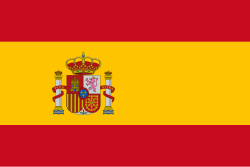It is not a minor dialect or a mere gestural adaptation of spoken language. Sign language is a complete, rich, and complex language that opens up a universe of possibilities for deaf and hard-of-hearing people. It is a key that allows them to fully participate in society and access education, employment, and culture.
But unfortunately, this key is often rusted by ignorance and lack of resources. In many contexts, sign language remains an invisible, marginalized, and undervalued language. This invisibility has devastating consequences for the lives of deaf people. Without access to effective communication, they can feel isolated, excluded, and deprived of opportunities we take for granted.
Why is sign language so crucial? Because it is much more than a communication tool. It is the cornerstone of deaf identity. Denying access to sign language means denying deaf people their fundamental right to identity, participation, and equality.
The responsibility to reverse this situation falls on all of us. It is imperative that governments invest in sign language education, the training of qualified interpreters, and public awareness of Deaf culture.
Schools could offer sign language classes so that children, deaf or not, can develop this skill. Companies should facilitate access to communication for their deaf employees. Ensuring the presence of interpreters at meetings and events.
But action is not limited to institutions. Each of us can contribute to building a more inclusive and accessible society by learning the basics of sign language. Showing respect and empathy toward deaf people, and denouncing all forms of discrimination.
Silence can be deafening. But speaking hands, when heard and understood, have the power to break down barriers, build bridges, and create a more just and equal world for all.
It’s time for society to stop ignoring sign language and begin to recognize it as a cultural treasure and an indispensable tool for social inclusion.
Deafness should not be a barrier, but an opportunity to enrich our society with the diversity and richness of sign language.
By: Indira Vania López Samé
- Holguin to Host National Celebration of Cuban Science Day - 22 de December de 2025
- When Cuba Wrote Its Name in the Light of Knowledge - 22 de December de 2025
- Concha Azul Exports Eels and Sea Cucumber - 22 de December de 2025

